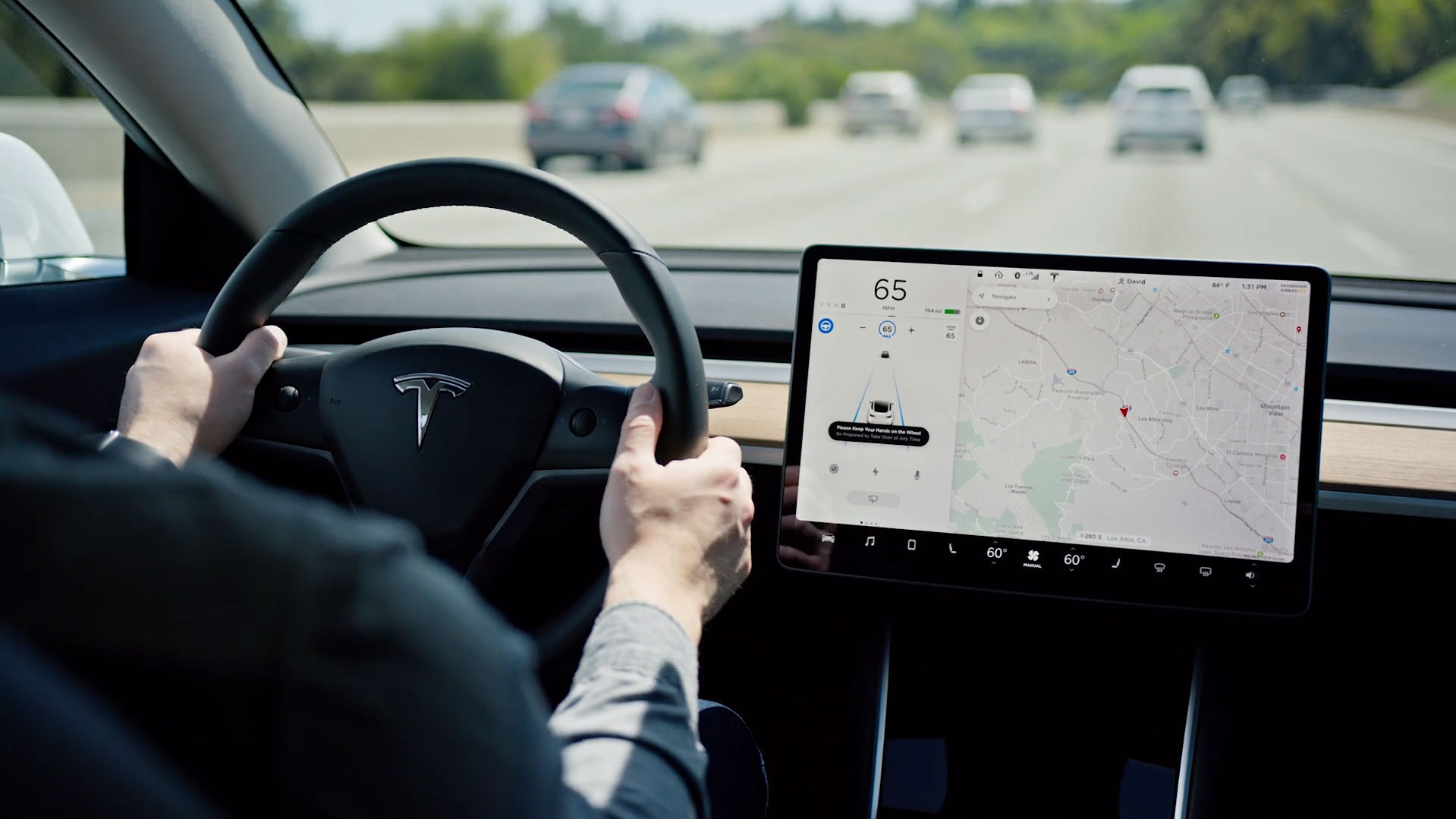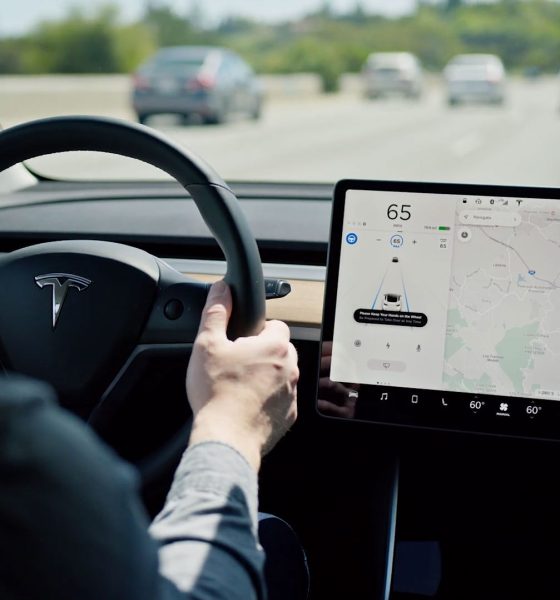

News
Tesla looks to recruit Autopilot testers in major U.S. cities
Tesla is looking to recruit several Autopilot test drivers in major U.S. cities as the company continues to ramp its self-driving efforts in the country.
For years, Tesla has been known for its semi-autonomous vehicles that assist drivers in traveling while creating a safer environment on the road for everyone. Over the years, Tesla has rolled out various updates and features to make its Autopilot and Full Self-Driving suites more robust while working toward a system that would be capable of Level 5 autonomy, where a car would drive passengers around without any interventions from the driver.
In October 2020, Tesla released the Full Self-Driving Beta to various owners around the United States. The most accurate and high-tech system to date, the FSD Beta group, has contributed more than 7 months of data for Tesla’s future rollout of the self-driving system. Tesla has made several changes to its self-driving systems in the past several months as well. Recently, the company announced it would be transitioning Model 3 and Model Y vehicles to a camera-based system instead of the previously utilized camera and radar-based systems it depended on for several years. CEO Elon Musk said that radar made up for some of the shortfalls that a camera-only approach would have, but he believes Tesla’s systems are robust enough to begin to remove crutches that assist the cameras.
According to its Careers page, Tesla is working to achieve a more well-rounded testing scenario now, and it is looking to hire Autopilot testers in a handful of U.S. cities.
The job postings are available in New York, Chicago, Philadelphia, the Bay Area, Washington D.C., and Miami, and they are recognized as ADAS Test Operator.
Tesla describes the role as:
“We are looking for a highly motivated individual to accelerate our vehicle-level testing for all current and future Autopilot features on the path to full self-driving. The ADAS Test Operator will be responsible to identify improvements and regressions across software iterations. A strong candidate will be objectively focused when making judgments, highly organized with a great attention to detail, and a self-starter.”
Interestingly, there are only a few things the applicant needs to be considered for the position, including a driver’s license, valid insurance, fluent writing and speaking in English, familiarity with Autopilot systems, and basic knowledge of driving systems.
ADAS Test Operators could also assist Tesla in other regions where FSD rollouts are being considered, including Europe.
Tesla said:
“This role could require the flexibility of traveling to domestic and international destinations as necessary, to test vehicles on public roads, test tracks and proving grounds.”
With the newly added roles to Tesla’s career page, the company is evidently ready to begin testing in more difficult road situations that will undoubtedly help develop the accuracy and confidence in the Autopilot and Full Self-Driving suites.
Tesla Model 3, Model Y builds in May 2021 will no longer equip radar

News
Tesla FSD fleet is nearing 7 billion total miles, including 2.5 billion city miles
As can be seen on Tesla’s official FSD webpage, vehicles equipped with the system have now navigated over 6.99 billion miles.

Tesla’s Full Self-Driving (Supervised) fleet is closing in on almost 7 billion total miles driven, as per data posted by the company on its official FSD webpage.
These figures hint at the massive scale of data fueling Tesla’s rapid FSD improvements, which have been quite notable as of late.
FSD mileage milestones
As can be seen on Tesla’s official FSD webpage, vehicles equipped with the system have now navigated over 6.99 billion miles. Tesla owner and avid FSD tester Whole Mars Catalog also shared a screenshot indicating that from the nearly 7 billion miles traveled by the FSD fleet, more than 2.5 billion miles were driven inside cities.
City miles are particularly valuable for complex urban scenarios like unprotected turns, pedestrian interactions, and traffic lights. This is also the difference-maker for FSD, as only complex solutions, such as Waymo’s self-driving taxis, operate similarly on inner-city streets. And even then, incidents such as the San Francisco blackouts have proven challenging for sensor-rich vehicles like Waymos.
Tesla’s data edge
Tesla has a number of advantages in the autonomous vehicle sector, one of which is the size of its fleet and the number of vehicles training FSD on real-world roads. Tesla’s nearly 7 billion FSD miles then allow the company to roll out updates that make its vehicles behave like they are being driven by experienced drivers, even if they are operating on their own.
So notable are Tesla’s improvements to FSD that NVIDIA Director of Robotics Jim Fan, after experiencing FSD v14, noted that the system is the first AI that passes what he described as a “Physical Turing Test.”
“Despite knowing exactly how robot learning works, I still find it magical watching the steering wheel turn by itself. First it feels surreal, next it becomes routine. Then, like the smartphone, taking it away actively hurts. This is how humanity gets rewired and glued to god-like technologies,” Fan wrote in a post on X.
News
Tesla starts showing how FSD will change lives in Europe
Local officials tested the system on narrow country roads and were impressed by FSD’s smooth, human-like driving, with some calling the service a game-changer for everyday life in areas that are far from urban centers.

Tesla has launched Europe’s first public shuttle service using Full Self-Driving (Supervised) in the rural Eifelkreis Bitburg-Prüm region of Germany, demonstrating how the technology can restore independence and mobility for people who struggle with limited transport options.
Local officials tested the system on narrow country roads and were impressed by FSD’s smooth, human-like driving, with some calling the service a game-changer for everyday life in areas that are far from urban centers.
Officials see real impact on rural residents
Arzfeld Mayor Johannes Kuhl and District Administrator Andreas Kruppert personally tested the Tesla shuttle service. This allowed them to see just how well FSD navigated winding lanes and rural roads confidently. Kruppert said, “Autonomous driving sounds like science fiction to many, but we simply see here that it works totally well in rural regions too.” Kuhl, for his part, also noted that FSD “feels like a very experienced driver.”
The pilot complements the area’s “Citizen Bus” program, which provides on-demand rides for elderly residents who can no longer drive themselves. Tesla Europe shared a video of a demonstration of the service, highlighting how FSD gives people their freedom back, even in places where public transport is not as prevalent.
What the Ministry for Economic Affairs and Transport says
Rhineland-Palatinate’s Minister Daniela Schmitt supported the project, praising the collaboration that made this “first of its kind in Europe” possible. As per the ministry, the rural rollout for the service shows FSD’s potential beyond major cities, and it delivers tangible benefits like grocery runs, doctor visits, and social connections for isolated residents.
“Reliable and flexible mobility is especially vital in rural areas. With the launch of a shuttle service using self-driving vehicles (FSD supervised) by Tesla in the Eifelkreis Bitburg-Prüm, an innovative pilot project is now getting underway that complements local community bus services. It is the first project of its kind in Europe.
“The result is a real gain for rural mobility: greater accessibility, more flexibility and tangible benefits for everyday life. A strong signal for innovation, cooperation and future-oriented mobility beyond urban centers,” the ministry wrote in a LinkedIn post.
News
Tesla China quietly posts Robotaxi-related job listing
Tesla China is currently seeking a Low Voltage Electrical Engineer to work on circuit board design for the company’s autonomous vehicles.

Tesla has posted a new job listing in Shanghai explicitly tied to its Robotaxi program, fueling speculation that the company is preparing to launch its dedicated autonomous ride-hailing service in China.
As noted in the listing, Tesla China is currently seeking a Low Voltage Electrical Engineer to work on circuit board design for the company’s autonomous vehicles.
Robotaxi-specific role
The listing, which was shared on social media platform X by industry watcher @tslaming, suggested that Tesla China is looking to fill the role urgently. The job listing itself specifically mentions that the person hired for the role will be working on the Low Voltage Hardware team, which would design the circuit boards that would serve as the nervous system of the Robotaxi.
Key tasks for the role, as indicated in the job listing, include collaboration with PCB layout, firmware, mechanical, program management, and validation teams, among other responsibilities. The role is based in Shanghai.
China Robotaxi launch
China represents a massive potential market for robotaxis, with its dense urban centers and supportive policies in select cities. Tesla has limited permission to roll out FSD in the country, though despite this, its vehicles have been hailed as among the best in the market when it comes to autonomous features. So far, at least, it appears that China supports Tesla’s FSD and Robotaxi rollout.
This was hinted at in November, when Tesla brought the Cybercab to the 8th China International Import Expo (CIIE) in Shanghai, marking the first time that the autonomous two-seater was brought to the Asia-Pacific region. The vehicle, despite not having a release date in China, received a significant amount of interest among the event’s attendees.








